
Chloé’s eco-chic spring 2022 show on the bank of the Seine in Paris. (Photo Credit: Shutterstock)
Earth Day is right around the corner (Friday, April 22nd) and while many think that the fashion industry is not doing enough to reduce its carbon footprint, we’re here to say, we’re making progress. Remember, Rome wasn’t built in a day! If you are a faithful reader of UoF’s weekly blog then you know how dedicated we are, not only in keeping our readers up to date on the latest in sustainable fashion and textiles, but in teaching our students how to become ‘sustainable’ designers.
In fact, UoF has a whole series of lessons covering the topic: Introduction to Sustainable Design, Sustainable Materials for Fashion Design, Designing, Producing & Marketing a Sustainable Collection, Eco-Textiles, Creative Draping-Zero Waste Dress, Creative Draping-2D Draping, Creative Draping-Zero Puzzle Dress, Creative Draping-Silk Taffeta Dress, Creative Draping-Organza Blouse, Creative Draping-Cocoon Jacket, Eco Fashion Global Initiative, Sustainable Fashion Designer-Monisha Raja and Sustainable Fashion Designer-Kristen Luong. And we continue to add more!
It’s hard to believe that it’s been 60 years since Rachel Carson’s book, Silent Spring (published September 27, 1962), warned us of the adverse environmental effects caused by the indiscriminate use of pesticides. James Hansen (considered the ‘father of global warming’), forty-three years ago created one of the world’s first climate models, nicknamed Model Zero that predicted what was to come. Earth Day, which began fifty-two years ago (April 22, 1970), is now an annual event in support of environmental protection that today includes a wide range of events coordinated globally by EarthDay.org and reaches one billion people in more than 193 countries. The official Earth Day theme for 2022 is Invest In Our Planet. As a scientist once told Rachel Carson, “We are walking in nature like an elephant in a china cabinet“.
Some Fashion Industry Facts & Solutions
Here are some frightening numbers: Since the 2000s, fashion production has doubled and it will likely triple by 2050, according to the American Chemical Society. The production of polyester, which is a popular fabric used in fast fashion, as well as athleisurewear, has increased nine times the amount in the last 50 years. Fast fashion has made clothing so inexpensive that items are easily discarded after being worn only a few times. According to State Of The Planet, a journal published by Columbia Climate School, a survey found that 20 percent of clothing in the U.S. is never worn; in the UK, it is 50 percent. Online shopping, available day and night, has also made impulse buying and returning items easier.
According to McKinsey, the average consumer buys 60 percent more than they did in 2000 and keep it half as long. And in 2017, it was estimated that 41 percent of young women felt the need to wear something different whenever they left the house. In response, there are companies that send consumers a box of new clothes every month.
So, as we look to the future generation of fashion designers, keep in mind that being a sustainable brand may be the key to your success.
One of the most effective ways a designer can go green is to work with sustainable textiles. Did you know that the world produces over 50 million tons of textile waste per year? So, we’d like to share some of the most innovative textiles that will help you create beautiful clothes while reducing your carbon footprint, water, and chemical use.
As you read about these new textiles, you should know the difference between biodegradable and compostable. All compostable items are biodegradable, but not all biodegradable products are compostable. A notable difference between the two is that biodegradable products break down into a few natural elements, while compostable products leave behind a single organic material called humus.
So, is biodegradable more eco-friendly than compostable, you ask? No, a biodegradable product is not necessarily better for the environment than a compostable product. That’s because biodegradable products can still be made of chemical plastics whereas compostable products are typically made from plants.
Here’s a list of some of the latest materials that are prioritizing sustainability.
AIRCARBON
Nike is trying to incorporate more sustainable materials like Aircarbon into its collection. (Photo Credit: Nike)
AirCarbon is made by Huntington Beach-based, Newlight Technologies. They collaborated with Nike on a material that sucks carbon from the air. The secret to AirCarbon, a material that took 10 years into develop, is found in nature: methane-loving micro-organisms. AirCarbon is certified carbon-negative by SCS Global Services, resulting in a net reduction in carbon dioxide emissions in the atmosphere through production.
AIRMYCELIUM
AirMycelium is a mushroom root (mycelium) material from a New York-based innovation firm, Ecovative. The material has a production capacity of 100,000 pounds a year and over time is biodegradable — with its raw mycelium materials being at-home compostable in soil.
BIOFIBER
BioFiber is created solely from food crop residues and was developed by Agraloop Bio-Refinery. It is meant to replace high-quality knits and woven fabrics. Agraloop processes waste from various food and medicine crops including oilseed hemp/flax, CBD hemp, banana, and pineapple, while incentivizing the waste among communities in need. BioFiber is mixed with other natural staple fibers to produce a variety of ring-spun and open-end yarns.
BIOSTEEL
BioSteel is a biotechnologically produced high-performance version of spider silk, which made its debut in 2015. It is produced by German biotech company AMSilk and has been used especially in shoe upper material for Adidas’ Futurecraft Biofabric sneakers. Properties include being 15 percent lighter than conventional synthetics, as well as being completely biodegradable. BioSteel has been certified by the Hohenstein Institute and the SGS Institut Fresenius.
CIRCULOSE

H&M became the first brand to use Circulose – made from textile waste. (Photo Credit: H&M)
Circulose is a patented fiber created by chemically processing 100 percent cotton fabric waste or other cellulosic textiles (like viscose). It is produced by Renewcell, a technology company founded in January 2012 by a group of cellulose researchers from KTH Royal Institute of Technology. Circulose significantly reduces the use of water and carbon footprint and is closed loop. H&M was the first to debut the Circulose material to consumers. As one of the biggest ‘fast fashion’ retailers, they are trying to do their part in reducing their carbon footprint.
In 2013, H&M launched a global garment collecting program and has a goal of having all products in stores made from recycled or sustainably sourced materials by 2030. H&M has tripled the amount of recycled materials used in its products from 5.8 percent to 17.9 percent with a goal of 30 percent by 2025.
H&M is launching a new line of sustainable tops, bottoms with adjustable waistbands and cuff, jackets, hats and blankets that can be composted once they are old and worn out. The 12-piece collection for newborns is made from organic cotton and launches in May 2022.
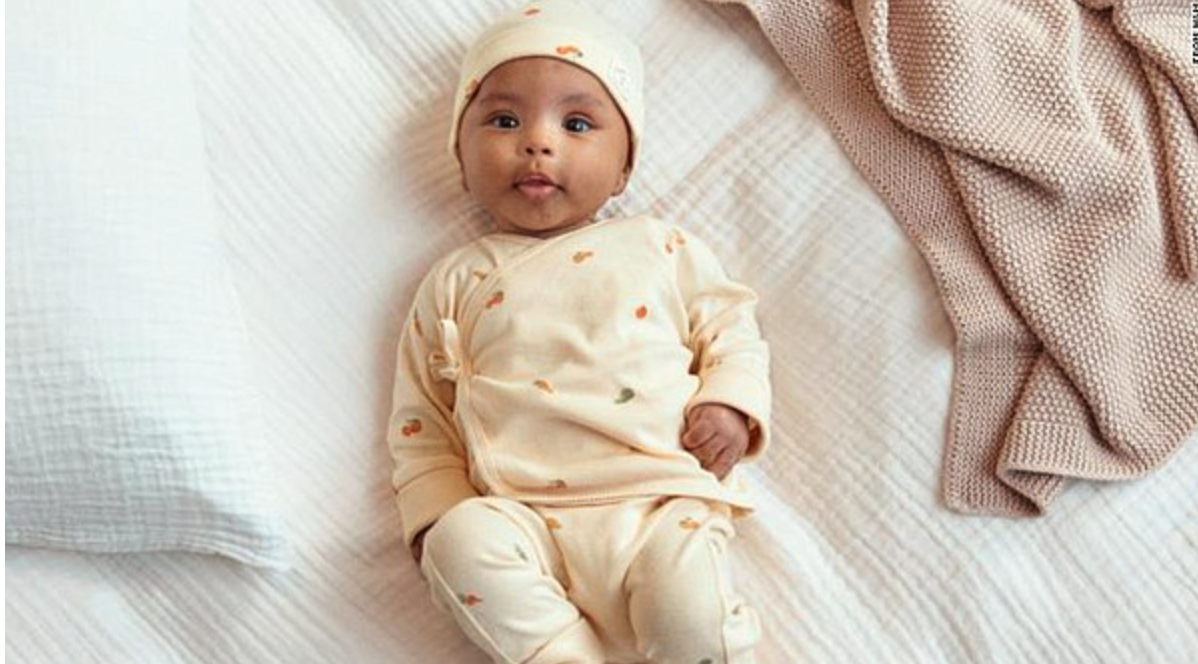
H&M launches a compostable 12-piece collection for newborns made from organic cotton in May 2022. (Photo credit: H&M)
DESSERTO

Karl Lagerfeld Collabs with Amber Valletta on a sustainable accessory collection using the material Desserto. (Photo Credit: Karl Lagerfeld)
Desserto is made of 40 percent organic cactus fiber, protein, pigments and 60 percent polyurethane. Backings are made with different fiber blends. Desserto, created by Adriano di Marti , is a leather replacement in handbags, footwear and apparel. Brands like Karl Lagerfeld, Fossil and H&M have used the material.
EVRNU

NuCycl

a regenerated fiber composed of 100% post-consumer waste using technology by Evernu® (Photo credit: Evernu.com)
Seattle-based Evrnu® is the firm behind NuCycl

, a regenerated fiber made from post-consumer clothing waste via its proprietary NuCycl technology. Garment waste is collected, sorted, and separated. The waste is then purified, shredded, and turned into a pulp. Extruded cellulose is made into a fiber that is finer than silk and stronger than cotton. The fiber is then spun into yarn, dyed and woven into fabric to be used to create recyclable textiles. Their mission is to create a circular economy for fashion. The fiber has been used by brands like Levi’s, Adidas and Stella McCartney.
FLOCUS
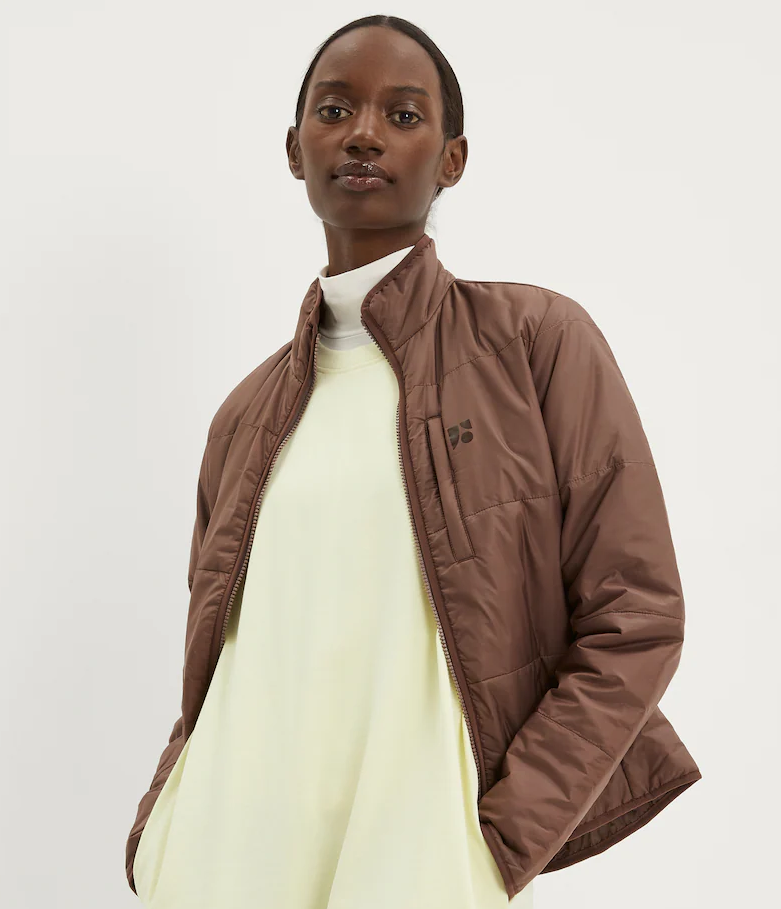
Flocus kapok fibers used for Frank and Oak’s outerwear. (Photo Credit: Frank and Oak)
Flocus is 100 percent biodegradable and 100 percent recyclable. The material is made from a yarn blend of fibers from the kapok tree. It is used for a wide range of fabrics and insulation materials being that it is lightweight, hypoallergenic and soft to the touch. Moisture management, temperature regulation and insect repellence are other qualities. The brand Frank and Oak uses Flocus for their outerwear.
PLNT & FRUT

PLNT and FRUT – bio-based fibers made from agricultural waste using Pangaia technology (Photo credit: Pangaia.com)
Another alternative to cotton is a bio-based technology developed from agricultural waste by Pangaia Material Science Ltd. Their Plnt fiber, is a blend of 60% bamboo lyocell, 20% Himalaya nettle and 20% SeaCell lyocell. Their Frut fiber is a cocktail of 60% bamboo lyocell, 20% pineapple leaf fiber, and 20% banana leaf fiber. Pangaia also has their own direct-to-consumer line of clothing.
HEIQ
HeiQ innovative textile technologies include fabric offerings such as Eco Dry, Real Silk and Clean Tech, aiding the performance and sustainability of fabric manufacturing by substituting less eco-friendly chemicals. The Eco Dry process, for example, eliminates the need for fluorine and makes a water-repellant layer for footwear and clothing applications. It complies with EU REACH and ZDHC chemical protocols, as well as Oeko-Tex.
INNER METTLE MILK
Inner Mettle Milk is a 100-percent natural fabric produced by apparel company Inner Mettle. The IM Milk fabric is a biodegradable fabric made from a blend of surplus milk from the Italian agricultural-sector and 60 percent Lenzing-produced Tencel Micromodal. The fabric is manufactured in Italy and employed in Inner Mettle’s innerwear collection.
KOBA
Koba is a partially bio-based faux fur developed by DuPont and Ecopel of which Stella McCartney and Maison Atia are devoted fans. Because it is also recycled polyester, it is not biodegradable, but the companies tout recycling options at the material’s end of life.
MALAI
Malai is a bio-based material grown atop coconut water through fermentation, a leftover from the coconut industry in South India. The jelly is harvested and enhanced with natural fibers, gums and resins to create a more durable and flexible material. Although Malai is in its early stages, the leather alternative is biodegradable and compostable.
MIRUM
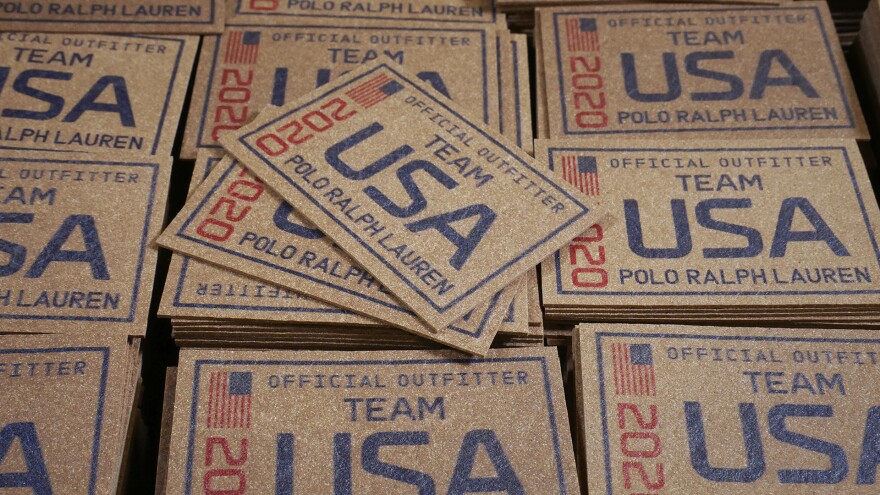
Patches made with Natural Fiber Welding’s Mirum leather substitute are included on Ralph Lauren’s Team USA parade apparel at the Tokyo Olympics. (Photo Credit: Ralph Lauren)
Mirum is a welded 100 percent natural, biodegradable plant-based leather alternative made by Natural Fiber Welding. The material comes from raw materials like cork, coconut, vegetable oil and natural rubber. With certification from the U.S. Department of Agriculture BioPreferred program, the company also counts investments from brands like Allbirds and Ralph Lauren Corp. The material is never coated in polyurethane or PVC, and is fully biodegradable with 40 percent lower carbon impact, per the company’s assessments. In addition to having a low carbon footprint, Mirum requires no water during manufacturing and dyeing.
NATIVA
Nativa wool is a 100 percent traceable wool fiber launched by Chargeurs Luxury Materials, a leader in luxury combed wool. The firm’s blockchain technology records transactions in a digital tamper-proof and decentralized database. Finnish outdoor brand UphillSport switched to all Nativa wool in 2020.
ORANGE FIBER
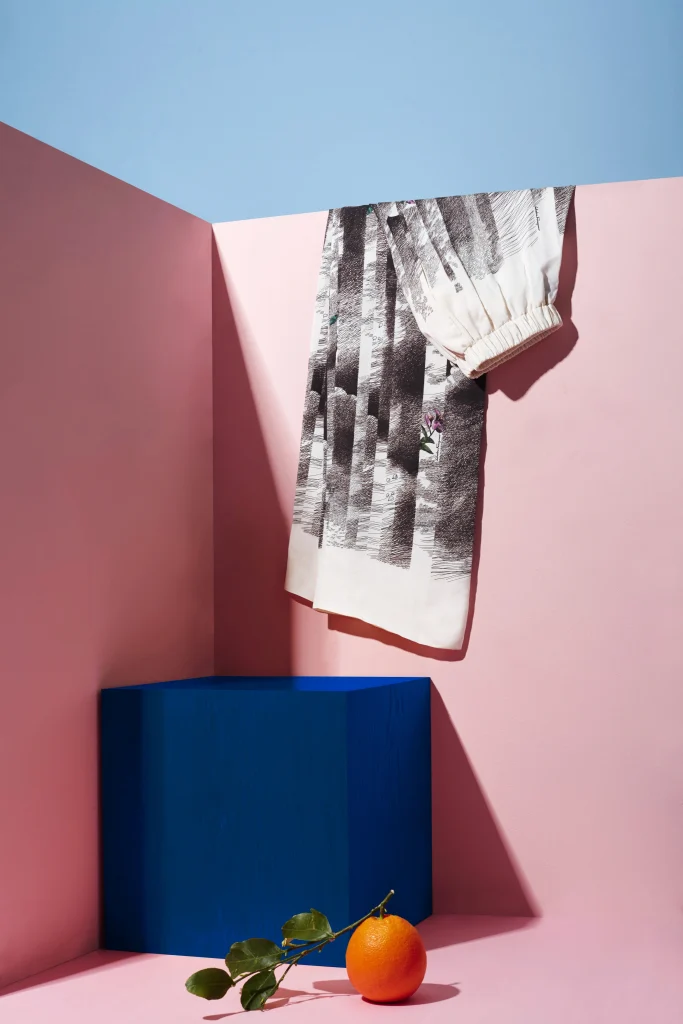
A look from the Orange Fiber capsule collection by Salvatore Ferragamo. (Photo Credit: Salvatore Ferragamo)
Orange Fiber is a luxurious fabric made out of waste citrus juice byproducts. It makes use of the otherwise more than 700,000 tons of citrus juice byproducts that would normally end up as waste. The Italian company (which collaborated with Lenzing) was the winner of the H&M Global Change Award in 2015. Also, Salvatore Ferragamo launched a capsule collection with the Orange Fiber in 2017.
REISHI

Sylvania is a mycelium material developed by MycoWorks and Hermès. (Photo Credit: Hermès)
Reishi is a non-plastic, non-animal leather alternative from biotech startup MycoWorks. The material is grown rapidly from mycelium and agricultural byproducts in a carbon-negative process. Luxury house Hermès has partnered with the Reishi to work on its own material dubbed “Sylvania.”
REPREVE
Repreve is a yarn made from recycled plastic bottles by maker Unifi. Repreve, was confirmed to reduce global warming potential related to greenhouse gases by 21 percent compared to generic, mechanically recycled polyester and 42 percent compared to virgin polyester, according to technology firm Higg (a partner to the Sustainable Apparel Coalition).
SORONA
Sorona, created by DuPont, was created to be a corn-based alternative to spandex (with about 37 percent of the polymeric fibers being made of renewable plant-based ingredients). The material is known for comfort, stretch and recovery properties, but is entirely free of spandex. The North Face, Club Monaco, and Stella McCartney have released products with Sorona.
SPINNOVA
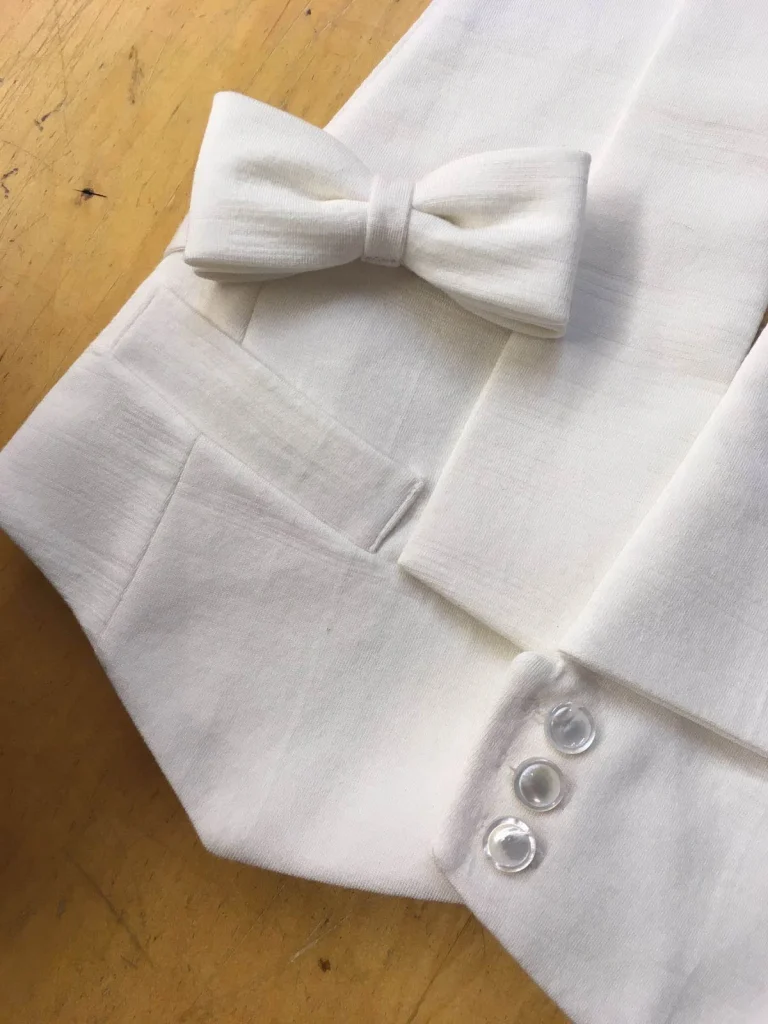
Apparel made form Spinnova’s new wood-based fiber. (Photo Credit: Spinnova)
Spinnova is a 100 percent natural, biodegradable and recyclable alternative to cotton made of wood and waste without the use of harmful chemicals. It is free of microplastics and harmful chemicals and uses 99 percent less water than cotton. The North Face and H&M are already partners, as is the world’s largest wood pulp producer Suzano.
TEXLOOP
Texloop RCOT is made with up of 50 percent Global Recycle Standard-certified recycled cotton, blended with other natural fibers, including Global Organic Textile Standard-certified organic cotton and Tencel Lyocell. Brands ranging from H&M to Lee have used the material to create more sustainable denim.
ZOA
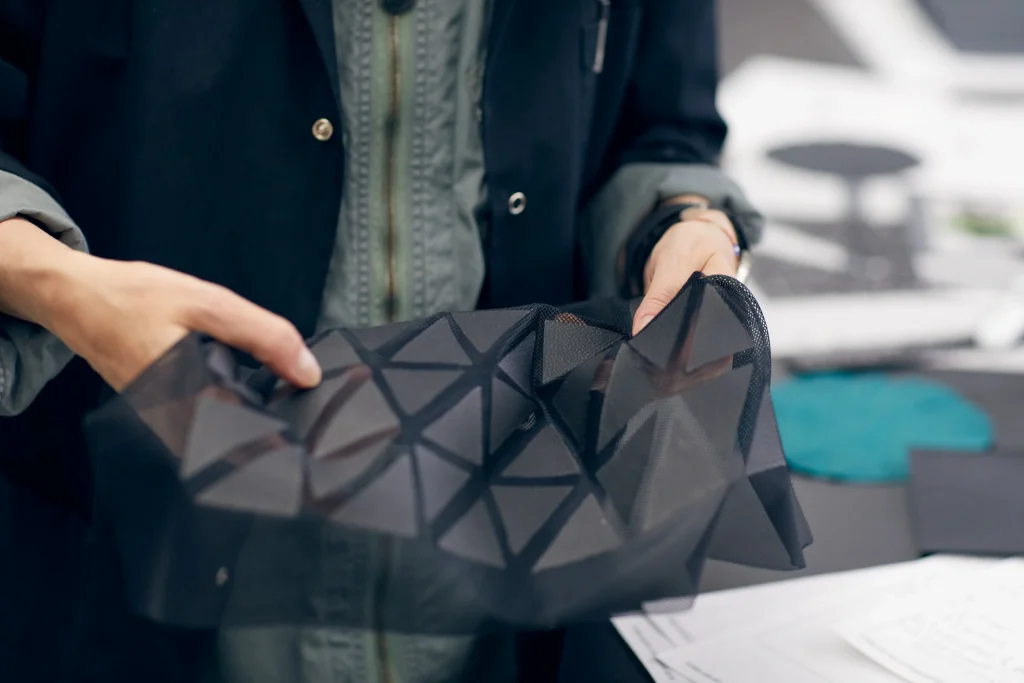
Modern Meadow uses biotechnology in its Zoa Biofabricated Material. (Photo Credit: Modern Meadow)
Zoa is a bioengineered leather-like innovation from biotech firm Modern Meadow. Zoa is made from protein collagen produced through fermentation from yeast in a lab and can be easily combined with other materials to accommodate any shape or texture. Zoa is already partnering with luxury and consumer goods brands.
As every student and teacher of fashion design knows, it’s up to us to chose the materials that we will use for our designs and therefore, unless we all make a concerted effort to source these eco-friendly materials we are only contributing to the earth’s pollution. Sustainable and ethical fashion starts with the fabric!
Here’s a few links where you can find sustainable fabrics and yarns – Happy Eco-Designing
30 Sustainable Fabrics For The Most Eco Friendly Fashion
Birds of a Thread
My Green Closet
So tell us, what will you do to reduce your carbon footprint?
-------------------------------------
By: Antonia Sardone
Title: EARTH DAY & HOW SUSTAINABLE, BIODEGRADABLE & COMPOSTABLE TEXTILES ARE CHANGING THE FACE OF FASHION
Sourced From: www.universityoffashion.com/blog/sustainable-textiles-changing-the-face-of-fashion/
Published Date: Sun, 17 Apr 2022 23:55:05 +0000
Read More
Did you miss our previous article...
https://edmmusic.news/fashion-clothing/electric-forest-artists-you-cant-miss-by-genre
 FestivalsMusicNew ReleasesArtistsFashion & ClothingVideosPrivacy PolicyTerms And Conditions
FestivalsMusicNew ReleasesArtistsFashion & ClothingVideosPrivacy PolicyTerms And Conditions
